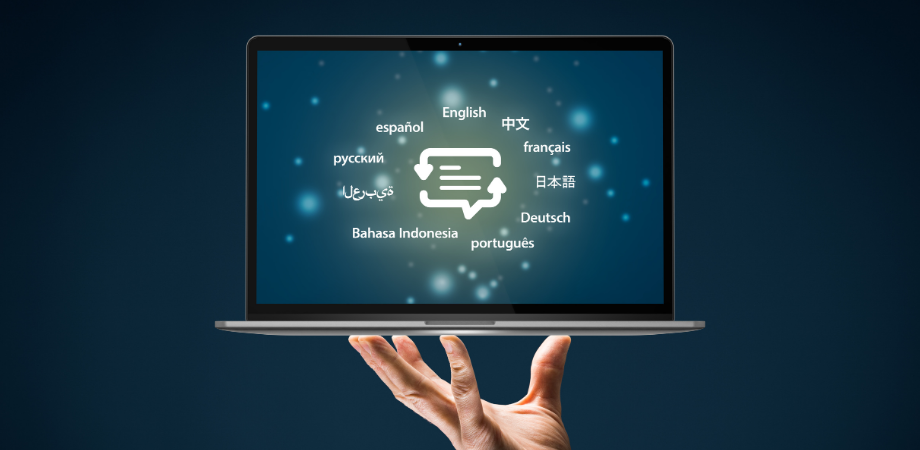In the enigmatic realm of artificial intelligence, human language poses a challenge even more profound than the strategies of a chess grandmaster. Among the early applications of computer power, automated translation remains as an uncharted domain. As discussions on automation intensify, the spotlight turns to translation, where machines aim to redefine linguistic expression dynamics. This article delves into automatic translation, emphasizing the critical role of machine translation post editing. We explore its meaning, use cases, and the symbiotic relationship with machine translation, unraveling the transformative impact on communication. From liberating humans from mundane tasks to reshaping multilingual content adaptation, automatic translation navigates uncharted linguistic frontiers, bridging the gap between man and machine.
What is Automated Translation?
In the evolving landscape of language and technology, the concept of automated translation is swiftly transitioning from the realms of science fiction to tangible reality. Illustrated by the formidable automation capabilities, a pertinent inquiry emerges: What exactly constitutes automated translation?
Automated translation, commonly known as machine translation (MT), involves the immediate transformation of text from one language to another through computer algorithms. Despite advancements such as neural machine translation, which enhances overall quality, achieving perfection remains a challenging endeavor. Tools like Google Translate and DeepL may yield understandable outputs, but their quality often falls short for website publishing.
The operation of automatic translation involves the replacement of words from one language with their counterparts, facilitated by software analyzing context and proximity within corpora. However, inherent limitations in machines hinder flawless translations, as they struggle to fully comprehend context and nuanced meanings.
Distinguishing between “automatic” and “automated” translation, the former operates without controls, while the latter involves external controls, utilizing software or tools for efficiency. Automation within automatic translation streamlines workflows, ranging from “hands-off” proxy approaches to more integrated processes requiring human management.
How does Automated Translation Work?
Automated translation involves the use of machine translation technology to quickly translate content, enhancing workflow efficiency. Despite the automation, human intervention is essential to align with specific content goals. Our automatic translation software provides users with the flexibility to customize the level of automation to their preferences.
The workflow of automatic translation relies on the chosen technology, with Translation Management Systems (TMS) utilizing automated machine applications. Translation solutions seamlessly integrate with these workflows, employing a proxy translation approach to swiftly translate website content in real-time. This process is managed by proxies, ensuring rapid and automatic translation based on machine translations or approved translations. The translation integration approach further supports the process through connectors, APIs, or plugin technology, giving users control over the level of automation in the translation process.
Automated Translation Workflows
The progression of automated translation workflows depends on the chosen technology. A translation workflow supports and propels the translation process forward, with Translation Management Systems (TMS) utilizing automated machine applications.
In the realm of translation solutions, the approach is connected to earlier workflows. The proxy translation method exemplifies automatic translation technology, swiftly translating website content in real time for users in various countries.
Managed centrally, proxies retrieve and translate content in real-time, utilizing machine translation or approved translations. The translated content is then presented to users on the website in a quick and fully automated manner.
The translation integration approach enhances the workflow with connectors, APIs, or plugin technology. Users employing integration technology must decide between automatic translation or involving a linguist. This automated website translation and integration approach provides control over the level of automation, allowing users to tailor it according to their preferences.

Automated Translation vs Machine Translation
“Automatic Translation” and “Machine Translation,” often used interchangeably, entail distinct roles in language technology. While automation is a potent tool, particularly in translation management, its application extends beyond machine-driven linguistic conversions.
The roots of automatic translation date back to the 1950s, evolving with advances in software and neural learning. Google’s adoption of neural learning in 2016 marked a transformative leap, enhancing the speed and efficiency of automatic translation.
Despite similarities, nuances exist between automatic and machine translation. Machine translation, as demonstrated by tools such as Google Translate and DeepL, constitutes a component within the larger scope of automatic translation. Google Translate leverages neural machine translation, while DeepL employs AI and artificial neural networks, illustrating the dynamic evolution of translation technologies.
In essence, automatic translation encompasses diverse technologies and systems with automated triggers, while machine translation specifically refers to language conversion without human input. This distinction highlights the evolving landscape of translation technologies, offering businesses powerful tools for global communication.
Benefits of Automated Translation
Automatic translation, notably through neural machine translation, has progressed significantly, closely approaching human-level quality while minimizing errors. This dynamic technology continually learns and refines its capabilities, ensuring ongoing enhancements.
In terms of speed and efficiency, automatic translation processes content swiftly, leveraging machine learning to boost its performance. Its broad accessibility, supporting over 100 languages, facilitates seamless global communication, breaking down language barriers and enhancing access to content. The standout advantage lies in cost-effectiveness, as the combination of rapid processing and an expanding array of language pairs makes it an economical solution. Its versatility further extends to various scenarios, offering a faster and more affordable alternative to human translators and proving useful for translating large volumes of content. In conclusion, the benefits of automatic translation encompass speed, efficiency, accessibility, cost-effectiveness, and versatile applicability, making it a pivotal asset in the evolving landscape of global communication.
How to Use Automated Translation on Your Website?
Implementing automatic translation on your website depends on language needs and content type. The effectiveness is influenced by linguistic data availability, with common language pairs providing better results. Follow these rules:
Content Suitable for Automatic Translation:
- Use for simple, unambiguous content.
- Ideal for low-visibility or low-traffic content (internal documentation, social media posts).
- Apply to repetitive technical content (instruction manuals) and user-generated content like product reviews.
- Suited for quickly perishable content, large bulks with a short turnaround, and frequently amended content.
Content Requiring Post-Editing:
- Post-edit product titles and translations between languages of dissimilar syntax.
- Post-edit product descriptions and medium-visibility content like knowledge base entries.
- Edit back-end meta information for visibility and accuracy.
Human Translators for Transcreation:
- Essential for critical content like homepages, advertising landing pages, blog posts, and press releases.
- Especially crucial when branding and cultural nuances matter.
By following these guidelines, you can effectively leverage automated translation based on your content and linguistic quality assurance requirements.



